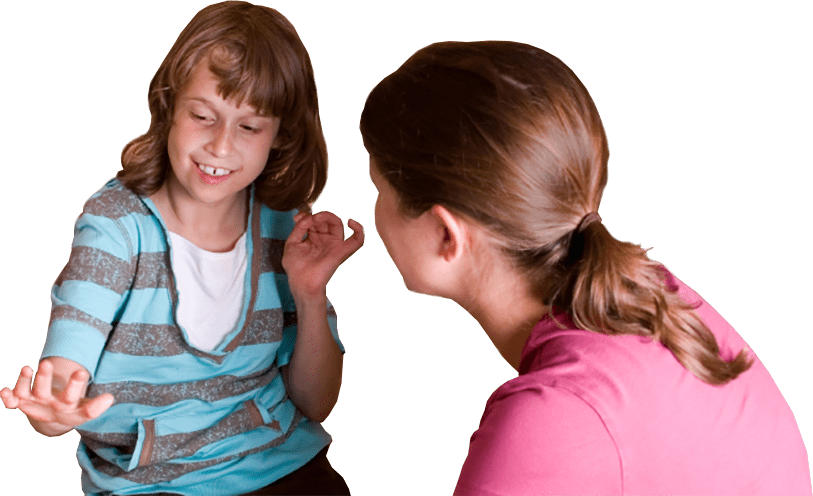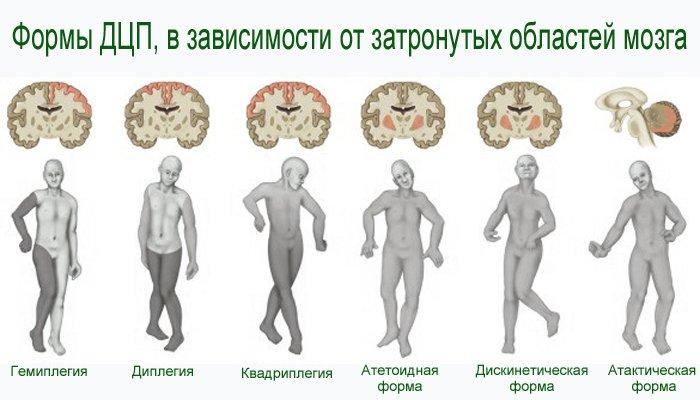Ekaterina Morozova
Reading time: 8 minutes
A A
The term known in medicine as cerebral palsy does not mean one disease, as it might seem to someone, but a whole complex of diseases with disorders in various systems of the body.
The very first signs of cerebral palsy (note - not to be confused with infantile paralysis) can appear immediately after the baby is born. But, in most cases, the disease is detected a little later (but still in infancy).
What is the cause of the disease, and what is it?
What is cerebral palsy in a child - the main risks and consequences of cerebral palsy
The disease, which in science was given the name cerebral palsy (approx. - infantile cerebral palsy), is primarily characterized by early development: during development in the mother's belly, at the time of childbirth or during the first months of life.
Regardless of the reasons for the development of the disease, there is a malfunction in the work of certain areas of the brain or their complete death.
The disease is characterized by ...
- Early development.
- Damage to the structures of the brain (approx. - spinal or brain).
- Impaired motor / muscle activity.
- Possible disorders of the psyche, hearing and vision, as well as speech and coordination of movements.
It should be noted that cerebral palsy is not a genetic or contagious disease.
At the same time, despite the severity of the disease, it lends itself to rehabilitation, which allows you to correct the symptoms and improve the quality of life of the child for his socialization to the extent possible.
It is noted that the highest percentage of cases is observed among boys.
What are the possible consequences of cerebral palsy?
First of all, the orthopedic consequences of the disease are noted. With regard to violations of motor activity, they become primary complications, with the timely elimination of which it is quite possible to put the child on his feet in a short time.
Dystrophic processes in skeletal muscles: this complication is of greatest importance. In the absence of proper treatment, it leads to deformation of the joints and bones - which, in turn, lead to impaired movement in general and provoke pain syndrome.
Other possible complications of the disease include:
- Abnormal muscle tone.
- The appearance of seizures.
- Having difficulty swallowing.
- The appearance of uncontrolled movements.
- Violation of the processes of urination / defecation.
- Delayed development.
- The appearance of problems with vision, speech and hearing.
- Having emotional problems.
It is worth noting that the symptoms of cerebral palsy will not necessarily be severe - it all depends on the case. The signs of the disease can be barely noticeable - or be expressed in absolute disability, in accordance with the degree of damage to the central nervous system.
It is important to say that with cerebral palsy, despite the fact that it is chronic, there is no progression.
The aggravation of the condition of a sick child can be observed only with the appearance of secondary pathologies. For example, with hemorrhages, with epilepsy or somatic manifestations.

The main causes of cerebral palsy - who is at risk?
The key reason for the development of the disease is considered to be a developmental disorder - or complete death - of a particular part of the brain, acquired before - or immediately after - birth.
There are more than 100 factors that can affect the development of cerebral palsy. All these factors, potentially detrimental to the infant's nervous system, are combined in medicine into 3 groups.
Namely, factors that are relevant to ...
- The course of pregnancy.
- The birth itself.
- The adaptation period of the newborn outside the womb during the 1st month of life (sometimes up to 2 years).
The reasons for the 1st group of factors include:
- Late toxicosis.
- The threat of miscarriage.
- Rh-conflict between mother and fetus (approx. - with a negative Rh of the mother).
- Fetal hypoxia.
- Infectious diseases transferred during pregnancy. The most dangerous are rubella (if the mother did not have it in childhood), syphilis, and toxoplasmosis.
- Injuries sustained by my mother during pregnancy.
- Somatic diseases.
- Early placental abruption.
- Placental insufficiency.
The reasons for the 2nd group include:
- Injuries to the baby's head, which he received when passing through his mother's narrow pelvis.
- Other birth injuries.
- Breech presentation of the fetus.
- Violation of labor activity.
- The baby is too heavy.
- Premature birth.
- And the most dangerous factor is rapid childbirth.
The reasons for the 3rd group were determined:
- Asphyxia of newborns.
- Hemolytic disease (note - occurs against the background of Rh-conflict).
- Amniotic fluid aspiration.
- Disturbances in the development of the respiratory system.
- Drug stimulation of labor and acceleration of labor through a puncture of the amniotic fluid.
- Serious illnesses suffered by the child (approx. - herpes infection, meningitis or even encephalitis).
- Toddler head injury.
- Postponed lead poisoning (in a child).
- Cases that could lead to brain hypoxia (note - blockage of the airways of the crumbs by something, drowning, etc.).
According to statistics, almost half of babies with cerebral palsy were born prematurely. Unfortunately, the vulnerability is highest due to the incomplete development of systems and organs, which, alas, significantly increases the risk of oxygen starvation.
As for asphyxia during childbirth, it accounts for less than 10 percent of all cases of cerebral palsy.
The most common cause of the development of the disease is considered to be latent infections in the mother (note - the degree of their toxic effect on the fetal brain is extremely high).
It is important to note that most of the listed risk factors cannot be called absolute.
In addition, the consequences of these factors can, if not be prevented, then at least minimized.
Forms of infantile cerebral palsy

Experts identify several forms of cerebral palsy, which differ, first of all, in the area of brain damage, as well as in the manifestations of the disease and other factors:
- Hyperkinetic. The reasons for this form include Rh-conflict, hypoxia, poisoning of the fetus with toxins, trauma at birth, nutritional deficiency of the fetus, etc. This form of the disease has 3 stages of development. At an early stage (approx. - lasts 3-4 months), convulsions, malfunctions of the respiratory system and arrhythmia are noted. The initial stage (approx. - lasts 5-48 months) is characterized by pronounced muscle hypertonicity, and the late stage is characterized by atrophy of individual muscles and consolidation of impaired motor activity. This form of the disease is considered the most susceptible to treatment.
- Atomic-literal. With this form of the disease, there is a low intelligence, a complete lack of interest in the outside world, and even aggressiveness. Signs of the form are underdevelopment of speech and optic nerves, tremors of the limbs, high muscle tone, inability to walk and even sit, and so on.
- Spastic diplegia. This form is the most common. It is characterized by damage to both sides of the body with emphasis on the legs, extremely rapid deformation of the joints, paresis of the vocal cords, impaired development of the psyche and body systems, mental retardation, etc. Treatment in this case is practically useless, but there are methods that help the child adapt to the world.
- Spactic tetrapapez. The main signs are a decrease in the activity of all limbs with their subsequent deformation, pain and spasms, mental retardation, and so on. The form of the disease requires continuous treatment in order to avoid a serious deterioration in health.
- Atactic. This form also has several stages of development. And if at an early stage only postural disturbances and partial disturbances in the norm of movements can be noted, then in a severe stage the child is no longer able to serve himself and move at all. Unfortunately, symptoms do not appear immediately.
- Spastic-hyperkinetic. In this case, they speak of a mixed form of the disease, expressed in the manifestation of spastic symptoms in hyperkinetic disease. Symptoms of the disease appear at an older age after a violation in the development of any body system.
- Rightful hemipapez. A type of disease in which there is paralysis of the entire right side of the body. The causes are usually serious infections, trauma, stroke, tumor, diabetes or meningitis. Usually, the disease manifests itself already in adulthood.
Each form of cerebral palsy has its own characteristics, causes of development, symptoms and methods of treatment.
The development of the disease can proceed in completely different ways - but it is important to recognize the signs in time and immediately begin treatment in order to avoid irreversible consequences.
Persistent treatment and regular exercise can give tangible results in almost any form of cerebral palsy.
All information in this article is for educational purposes only, it may not correspond to your specific health circumstances, and is not a medical recommendation. The сolady.ru website reminds you that you should never delay or ignore your visit to a doctor!

